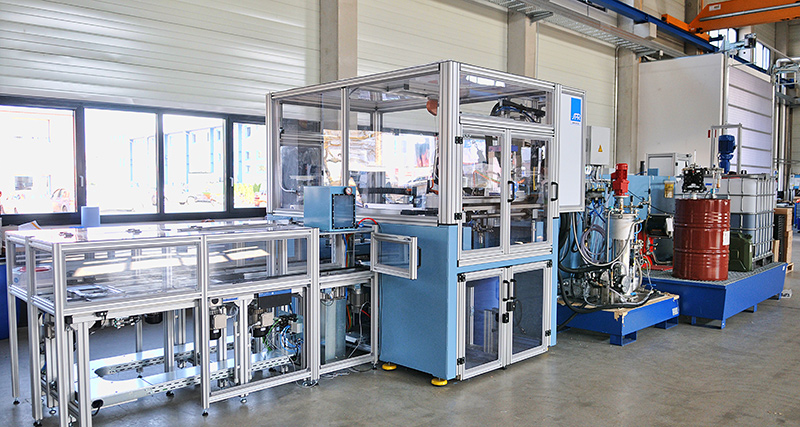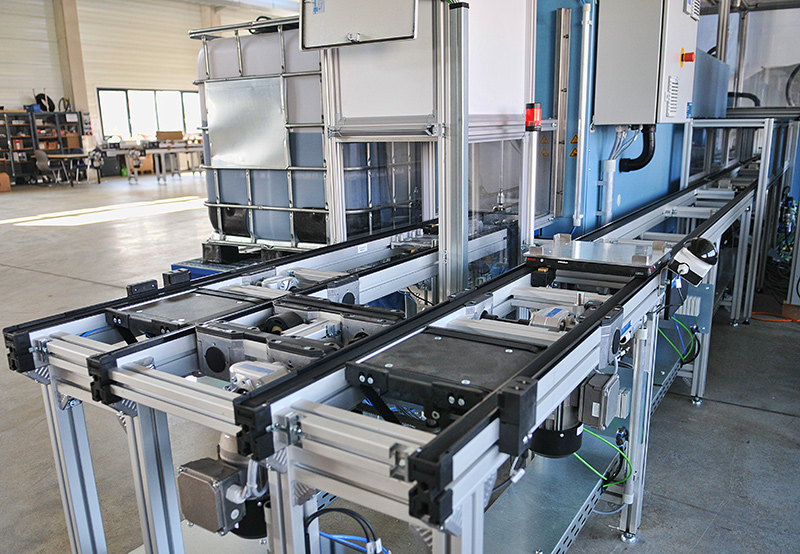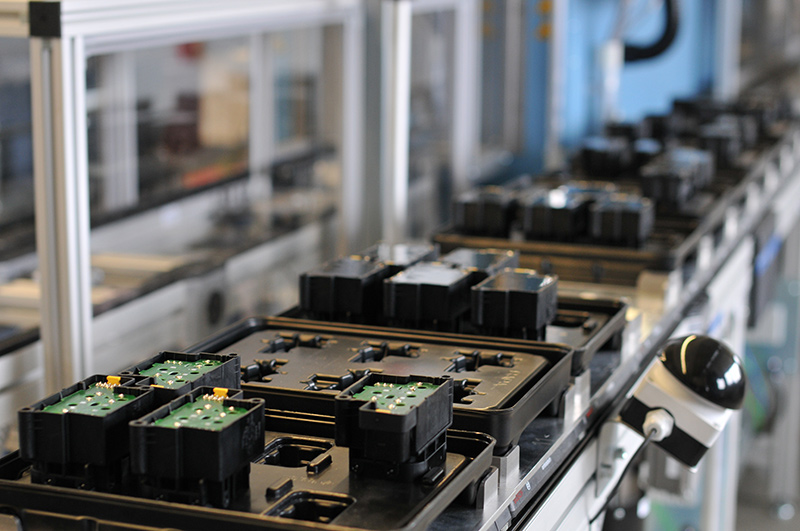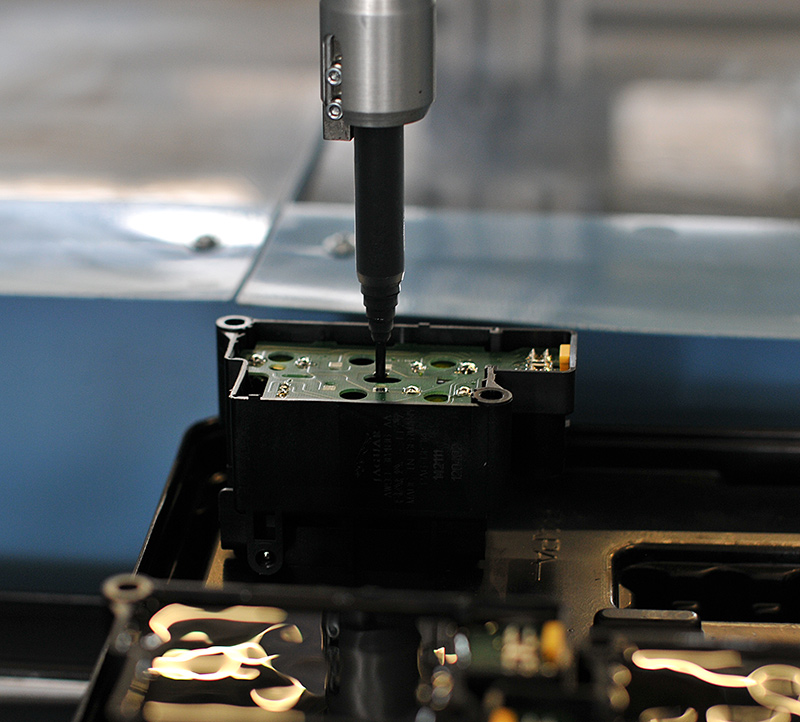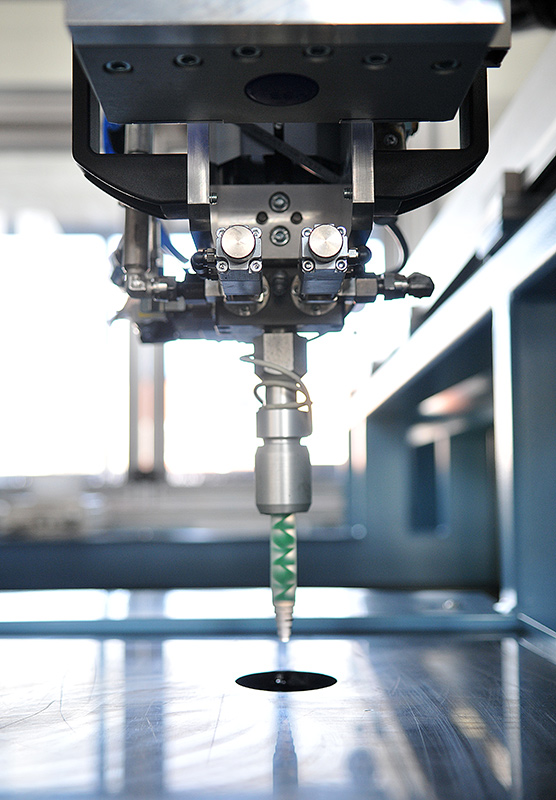Co-engineered for success by taking into account the latest application technologies, automation and our customers.
Rausch and Pausch, Rapa for short, headquartered in the Upper Franconian town of Selb, is a world-leading developer of hydraulic and pneumatic valve systems for vehicle manufacturing. Customers include Daimler, Audi, Porsche, Jaguar and Chrysler, and increasingly companies in other industries as well.
Positive developments in the field of valve assemblies for air suspension have called for increased production. In response, Rapa decided to expand existing production capacities and add a dispensing line.
The existing process had to be optimized and equipped with the latest technology and control engineering. At the same time, the new dispensing line had to be replicable for the RAPA facility in the United States.
Joint engineering
For many years, SAR and the Hilger&Kern/Dopag Group have undertaken joint customer projects. The promising new dispensing unit was engineered in consultation with customers with state-of-the art mixing and metering technology as well as automation.
Each partner brings their core competencies to the project - mixing and metering technology from the Hilger&Kern/Dopag Group, high-performance automation from SAR and process expertise from Rausch and Pausch.
Different requirements in the plants
The newly conceptualized unit had to fulfil the somewhat different requirements of the German and American factories.
Starting with a concept for optimizing the process, a compact cell was created that represents the latest in state-of-the-art technology.
The result is a dispensing unit with a camera-based part identification system, an integrated 3-axle system and a DOPAG mixing and metering unit with static-dynamic mixers and rinse system, to handle a 2K casting compound.
The unit's special feature is the user-friendly visualization and control of the whole process via a central touch screen. To make this possible, interfaces with the individual sub-assemblies were created. All sub-assemblies are visualized and parametrized centrally via the touch screen.
Up to 50 workpiece carriers can be loaded into the unit with air suspension blocks. A camera system checks the data matrix code and the geometry of the parts as well as whether or not the parts are correctly loaded. Error messages cause the parts to pass through the unit unprocessed.
First the parts are pre-heated to the desired temperature in the heated tunnel. Then the pre-dispensing takes place inside the cell.
Selection of the appropriate dispensing program among the twenty available variations occurs automatically based on the data of the particular product type.
The mix-head has 3-axis handling for dispensing. During the whole process, two gear meters determine the actual value of the mixing ratio.
Any deviation beyond the adjustable parameters immediately activates an electronic control that corrects the deviation.
Following pre-dispensing, the workpiece carrers are positioned under a vacuum lock, which prevents air from being trapped in the parts by briefly generating a vacuum.
Then the parts pass through a cooling zone, before being filled the rest of the way in the dispensing cell as the finishing layer is applied.
Then the parts pass through another cooling zone. Buffers in these zones ensure that a continuous production process is guaranteed despite downtime.
Reduced cycle times achieved
On the whole, Rapa is very satisfied with the new dispensing cell, which makes it possible to produce a larger output through shorter cycle times. Thanks to the innovative and cost-efficient process, the dispensing cell is also noticeably more compact.
Für weitere Informationen schreiben Sie uns bitte unter
smb@sar.biz


